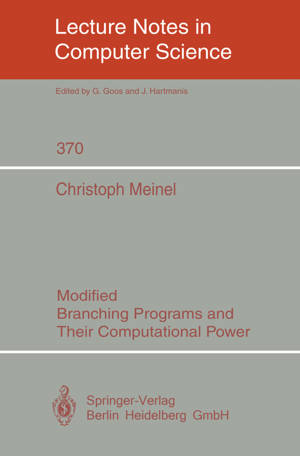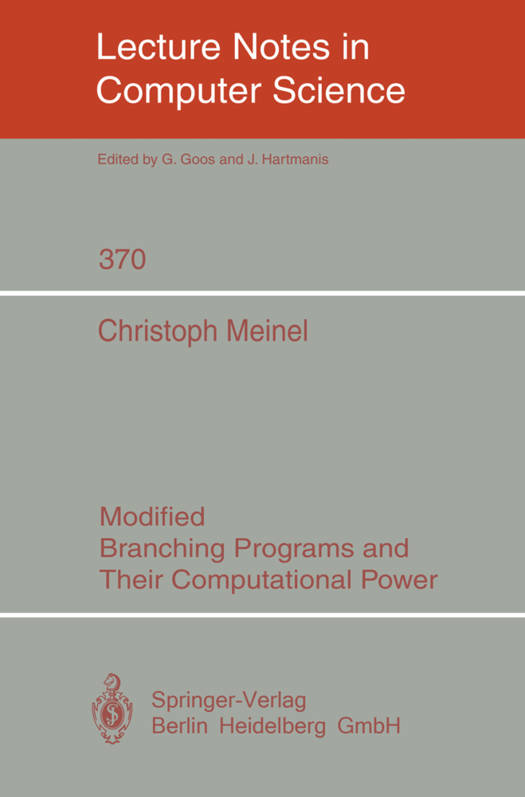
- Afhalen na 1 uur in een winkel met voorraad
- Gratis thuislevering in België vanaf € 30
- Ruim aanbod met 7 miljoen producten
- Afhalen na 1 uur in een winkel met voorraad
- Gratis thuislevering in België vanaf € 30
- Ruim aanbod met 7 miljoen producten
Zoeken
Omschrijving
Branching Programs are, besides Boolean circuits, the most important nonuniform model of computation. This volume gives a survey of the latest research in this field. It presents a branching program-based approach to complexity theory. Starting with a definition of branching programs and a review of the former research, nondeterministic branching programs are introduced and investigated, thus allowing the description of some fundamental complexity classes. The book then concentrates on the new concept of Omega-branching programs. Apart from the usual binary tests they contain features for evaluating certain elementary Boolean functions and are suited for characterizing space-bounded complexity classes. By means of these characterizations the author demonstrates the separation of some restricted complexity classes. In the appendix a number of extremely restricted graph-accessibility problems are given, which are, due to the branching program descriptions in chapters 1-3, p-projection complete in the classes under consideration.
Specificaties
Betrokkenen
- Auteur(s):
- Uitgeverij:
Inhoud
- Aantal bladzijden:
- 132
- Taal:
- Engels
- Reeks:
- Reeksnummer:
- nr. 370
Eigenschappen
- Productcode (EAN):
- 9783540513407
- Verschijningsdatum:
- 12/07/1989
- Uitvoering:
- Paperback
- Formaat:
- Trade paperback (VS)
- Afmetingen:
- 156 mm x 234 mm
- Gewicht:
- 213 g

Alleen bij Standaard Boekhandel
+ 105 punten op je klantenkaart van Standaard Boekhandel
Beoordelingen
We publiceren alleen reviews die voldoen aan de voorwaarden voor reviews. Bekijk onze voorwaarden voor reviews.











